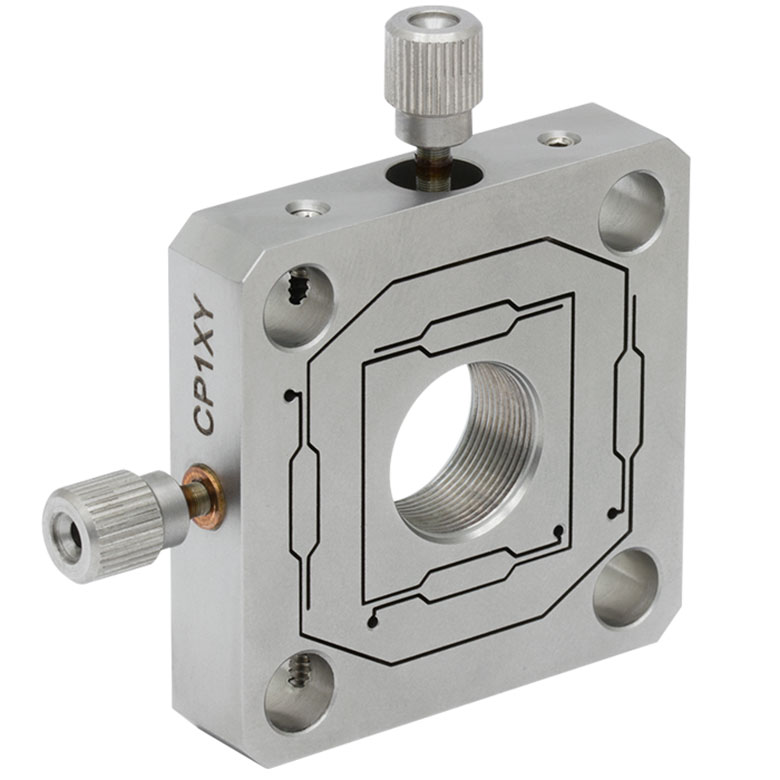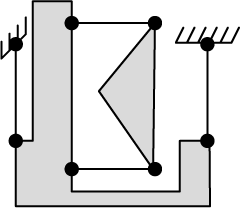I'll start from the particular example you are asking about. It is a positional adjustment device. It is heavily used in laser optical tables to provide micrometer adjustments. And it falls in the category of compliant mechanisms like you suggest.
There are a few requirements for these devices (most have been already pointed by others). IMHO, the main two are
a) resistance to vibration (the added mass serves this purpose, because it lowers the natural frequency).
b) spring back repeatedly to original position. This is a very important aspect for these types of devices. They do not rely on the screw to set the position, they passively press onto the screw, thus minimizing any backlash that might be present.
Now regarding why compliant mechanism need to have thick sections:
In my understanding is that for the same force levels, the deformation of thin sections provides the range of movement, while the deformation of thick parts is negligible, thus allowing to maintain a functional shape.
If the thickness was everywhere small/flimsy, you would have a structure that would deform everywhere significantly. That may not always be a problem. The problems occur when you are trying to move/displace this structures a lot. Then their mode of displacement becomes unpredictable. (you might have experienced the problem when you are trying to use a tape measure in non straight position like the following)



